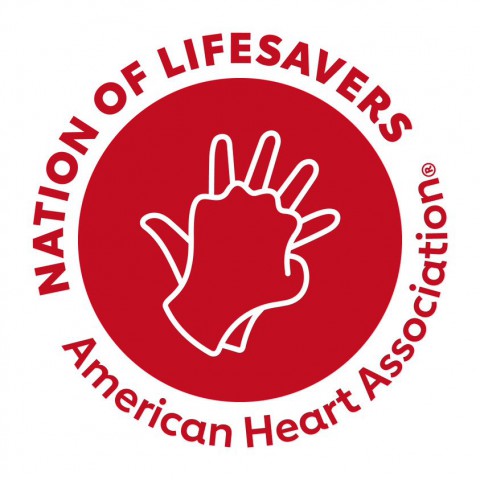
The American Heart Association launches movement to double survival rate from sudden cardiac arrest by 2030; Buffalo Bills safety Damar Hamlin to serve as National Ambassador
DALLAS, TX--Seven in 10 people in America say they feel powerless to act in the face of a cardiac emergency[1]. As a result, less than half of all people who need this lifesaving skill receive CPR from bystanders before professional help arrives[2]. On this first day of National CPR and AED Awareness Week, the American Heart Association is challenging everyone to join the Nation of Lifesavers™ and commit to make CPR and AED (automated external defibrillator) awareness and education a permanent fixture in all communities across the country.
More than 350,000 out-of-hospital cardiac arrests occur in the United States each year[3], according to the Association, which is working to increase the number of bystanders who use CPR in an emergency. More than 90% of people who experience a cardiac arrest outside of the hospital will not survive. The Association is the world’s leading voluntary organization dedicated to building healthier lives for all, free of cardiovascular diseases and stroke.
“Seven in ten Americans say they feel powerless to act in the face of a cardiac emergency,” said Nancy Brown, chief executive officer of the American Heart Association. “We can change that. Each of us has the power in our own hands to respond to a sudden cardiac arrest. We simply need to know what to do and have the confidence to act. Through our science, brand and grassroots footprint, the American Heart Association has the capacity and unique capability to develop evidence-based clinical guidance and to lead with instruction and policy change. The moment is now. The momentum is here. Let's meet it and build a nation of lifesavers.”
The Association is committed to turning a nation of bystanders into lifesavers. The new multi-year initiative will ensure teens and adults can learn about CPR and AED use, share that knowledge with friends and family and engage employers, policymakers, philanthropists and others to create support for a nation of lifesavers. The long-term goal: to ensure that in the face of a cardiac emergency, anyone, anywhere is prepared and empowered to perform CPR and become a vital link in the chain of survival.
Buffalo Bills safety Damar Hamlin, cardiac arrest survivor and founder of the Chasing M’s Foundation, will serve as the National Ambassador for the movement.
“CPR saved my life on the field, and it could save your life or the life of someone you love,” said Hamlin. “Learning Hands-Only CPR is a simple process and can be the difference between life and death. I share the American Heart Association’s commitment to creating future generations of lifesavers.”
Damar Hamlin’s team, the Buffalo Bills, has joined the Nation of Lifesavers through a financial commitment of $1 million to the initiative. The Association, with support from the Bills, will train thousands of Western New Yorkers in Hands-Only CPR over the next five years through community empowerment events, each aimed at training hundreds of people.
Creating a Nation of Lifesavers means the Association will simultaneously focus on efforts to drive policy change at both the federal and state levels. The Association has endorsed the federal Access to AEDs Act, which would create a grant program for K-12 schools to provide CPR and AED training; purchase AEDs; and create cardiac emergency response plans that establish specific steps to reduce death from cardiac arrest in school settings. The Association also joins the National Football League—its longtime collaborator—in its Smart Heart Sports Coalition. Along with other major sports leagues and organizations, the coalition is advocating for states to adopt evidence-based public policies that will prevent fatal outcomes from sudden cardiac arrest among high school students. The Association encourages everyone, regardless of where they live, to take 90 seconds to learn how to save a life now at www.heart.org/HandsOnlyCPR.
Hands-Only CPR is chest compression-only CPR. Following a cardiac arrest of a teen or an adult, compression-only CPR can be equally effective as traditional CPR in the first few minutes of emergency response. If a teen or adult suddenly collapses, witnesses should immediately call emergency services and begin chest compressions at a rate of 100-120 beats per minute and a depth of approximately two inches.
In 2009, the Association launched a nationwide Hands-Only CPR campaign to raise awareness about this life-saving skill. Since 2012, more than 10.5 million people have learned Hands-Only CPR via events, training kiosks and video education with the support of Elevance Health Foundation.
For additional ways to raise awareness during National CPR and AED Awareness Week, visit heart.org/CPRWeek.
[1] 2021 Hands-Only CPR perceptions survey, conducted for AHA https://newsroom.heart.org/news/new-survey-only-6-out-of-10-adults-feel-comfortable-taking-charge-and-giving-cpr
[2] Heart Disease and Stroke Statistics—2022 Update: A Report From the American Heart Association, Table 19-2 https://www.ahajournals.org/doi/epub/10.1161/CIR.0000000000001052
[3] Heart Disease and Stroke Statistics—2022 Update: A Report From the American Heart Association, Table 19-2 https://www.ahajournals.org/doi/epub/10.1161/CIR.0000000000001052
SOURCE: American Heart Association
